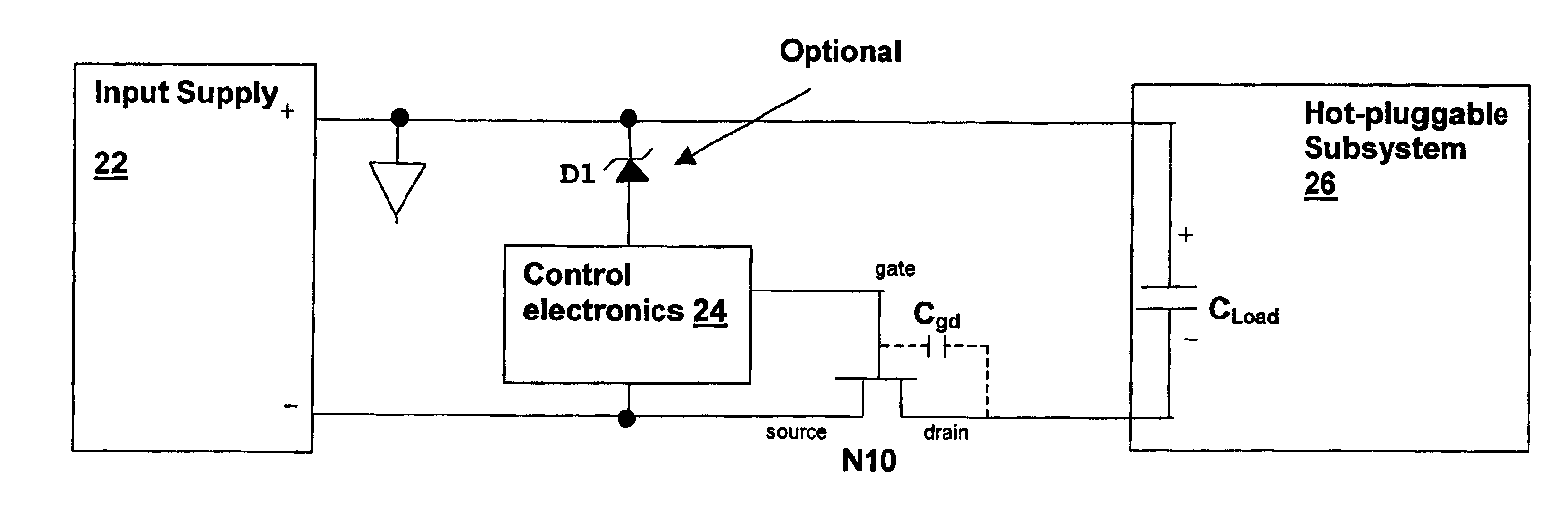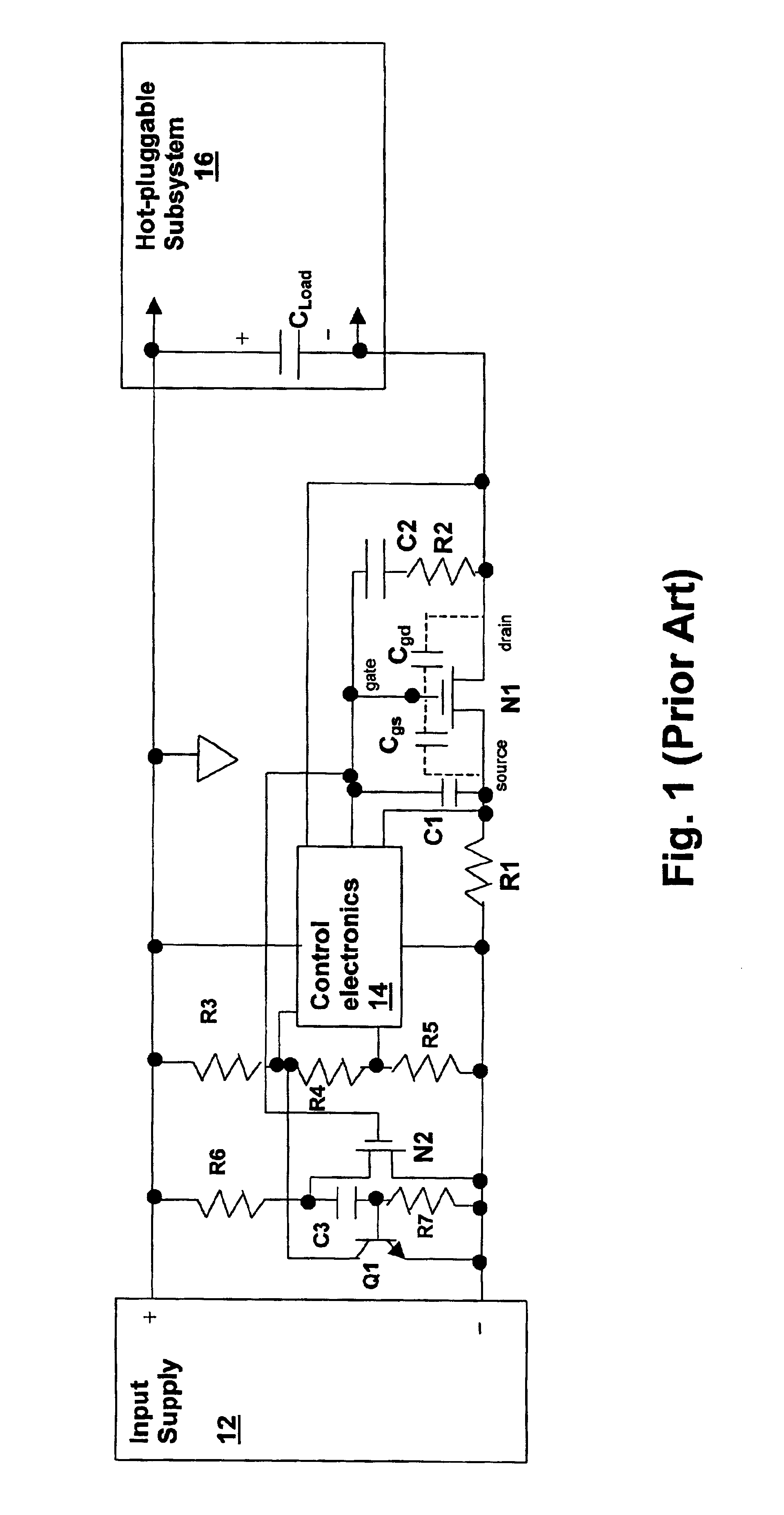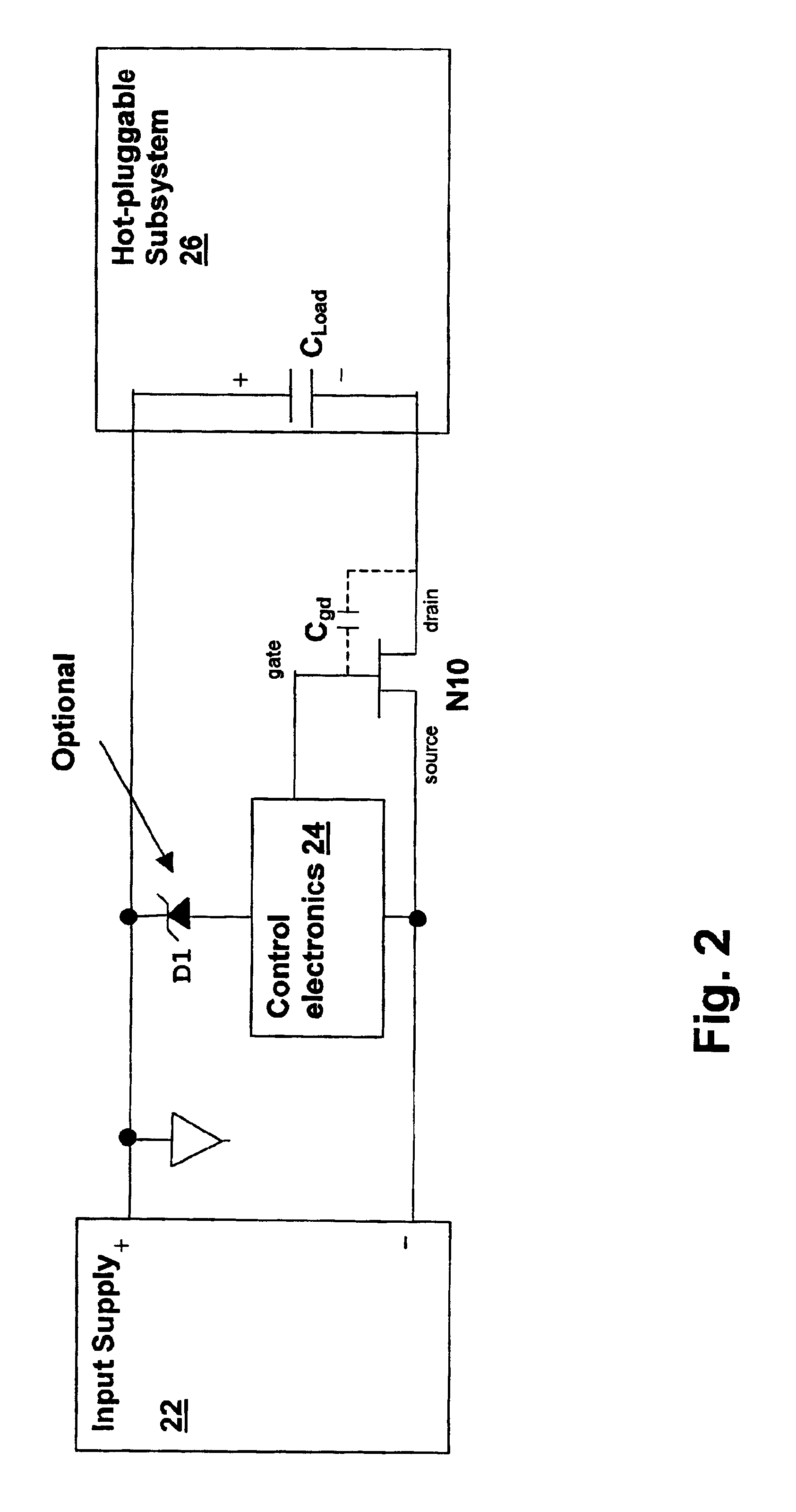Apparatus and method for adaptively controlling power supplied to a hot-pluggable subsystem
a technology of hot-plugging subsystems and adaptive control, applied in emergency protective arrangements for limiting excess voltage/current, instruments, liquid/fluent solid measurement, etc., can solve problems such as power supply rail dips, electromagnetic interference (emi), and affecting the operation of host systems and other connected subsystems. , to achieve the effect of increasing the size, complexity and cost of power supply electronics
- Summary
- Abstract
- Description
- Claims
- Application Information
AI Technical Summary
Benefits of technology
Problems solved by technology
Method used
Image
Examples
Embodiment Construction
[0020]Referring to FIG. 1, a prior-art power supply for a hot-pluggable subsystem is depicted. An input supply 12, provides a source of power for operation of internal components of the power supply and for supplying power to a hot-pluggable subsystem 16. A pass device N1, controls current supplied to CLoad and thus the power supplied to hot-pluggable subsystem 16. A control electronics 14 controls the gate of pass device N1, so that startup characteristics can be managed. A feedback connection from the drain terminal of pass device N1 that is coupled to hot-pluggable subsystem 16 is provided to permit control of pass device N1. A feedback network formed by capacitor C2 and resistor R2 are typically provided to control inrush current, as the charging of CLoad will be proportional to the current supplied by control electronics 14 to discharge capacitor C2. Capacitor C1 is required to prevent the momentary connection of hot-pluggable sub-system 16 from turning on pass device N1 via a ...
PUM
 Login to View More
Login to View More Abstract
Description
Claims
Application Information
 Login to View More
Login to View More - R&D
- Intellectual Property
- Life Sciences
- Materials
- Tech Scout
- Unparalleled Data Quality
- Higher Quality Content
- 60% Fewer Hallucinations
Browse by: Latest US Patents, China's latest patents, Technical Efficacy Thesaurus, Application Domain, Technology Topic, Popular Technical Reports.
© 2025 PatSnap. All rights reserved.Legal|Privacy policy|Modern Slavery Act Transparency Statement|Sitemap|About US| Contact US: help@patsnap.com



